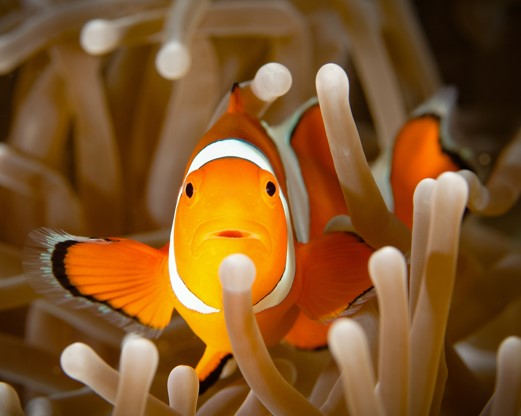Get the best price!

Common clownfish





Clownfish have a symbiotic relationship with sea anemones, they are the only type of fish that are immune to the lethal stinging cells in the tentacles thanks to a protective mucous. The clownfish actually use the anemones as a form of protection against predators and in return the anemone is kept clean of any uneaten food and nutrients are returned through its faeces.
Clownfish live in groups and are highly territorial, protecting their adopted anemone against other clownfish. The largest female dominates the group and only the largest male breeds with her. Breeding can take place all year round and begins with the male displaying courtship behaviour such as biting, chasing and extending his fins. The female can release anywhere between 100 and 1000 eggs which the male fertilises and then protects until they hatch between four and five days later.
All clownfish start life as a male – they are born with both active male and dominant female reproductive organs which means that if the dominant female dies, the largest male will then permanently become a female to take her place. This allows the stability of the group to be maintained such that when the female dies, the dominant male doesn’t need to begin a new search for a replacement.
Get the best price!